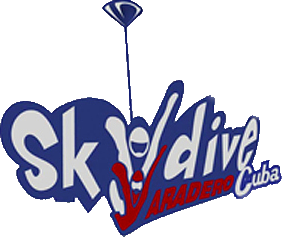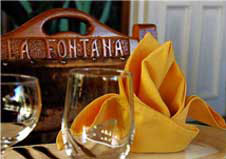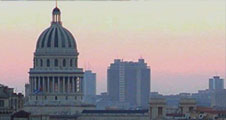Hemingway’s correspondence within the reach of specialists (Part III )
By: Gladys Rodríguez Ferrero | Source: CUBARTE | 03 de August 2009
It was decided that three copies of the microfilm would be used for both institutions: two copies of negatives (one for the records and another one as reserve) and a positive copy that will be used in research. This will give each institution the capacity to replace, from the records copy, those positive copies degraded by time and use.
Having a reserve negative available will allow the replacement of the copies used in research without needing to access the negative records or master.
Two copies are at the Ernest Hemingway Museum of Cuba and in the Hemingway collection of the John F. Kennedy Library and Presidential Museum of the United States for any reference or study by specialists. The use of these images and their reproduction is subject to the approval of the National Council of Cultural Heritage of Cuba.
To preserve memory, to digitalize the documents. To obtain, from the circulation of these ones, the world recognition of the importance of the collection preserved by Cuba at the Finca Vigía Museum. To propitiate a deep analysis from the study of these ones will allow a deeper understanding of Ernest Hemingway’s work. It will also make it possible to recognize the importance of Cuba not only in his life but also in his work.
Cuba, which has kept his legacy along more than forty years, also recognizes itself in it, because this one has a huge meaning not only in the Cuban history but also in its culture.
The Hemingway collection of Finca Vigía, cultural heritage of Cuba, has transcended the borders of the Cuban archipelago for its importance, thus becoming a propitious cultural bridge between the peoples of Cuba and the United States.
The Ernest Hemingway Museum should keep and preserve from these format changes, not only its documentary heritage but also the digital one imposed by the new technology. A new challenge for this museum institution, one of the most important of the National Net of Museums of the National Council of Heritage of Cuba.
How ever, from these new needs of preservation, the Museum will have to take into account diverse considerations at this respect, measuring the differences between one medium and the other one.
In the paper documents that make up the wealth of the Ernest Hemingway Museum of Cuba, the curator can rapidly visualize the symptom of deterioration timely and decide the posterior intervention. How ever, in the Digital Heritage, in the moment that the symptom is detected, we have lost the information.
Unlike the traditional preservation in which the medium is stabilized, in the digital patrimony the speed of the technological evolution of the formats, programs (software) and even the conversion equipment (hardware) can unleash the degradation faster than in the paper documents.
The preservation of a digital medium does not depend on how much the medium can last but on the capacity of the document to be transferred from one medium to another and from one format to another one as many times as is possible. To not update the information is synonym with destruction.
Taking into account what was previously exposed, the Museum will face risks for the preservation of that patrimonial memory digitally for which it is indispensable to take certain steps to avoid its loss.
To counteract these effects, in the construction of the new Warehouse of museum pieces that the museum will have, a vault has been planned for the preservation of the most sensitive collections and the digital heritage will also be protected there.
On the other hand, an active preservation will have to be carried out including a dynamic task in the creation of back ups or duplicates of the material, in the transference of mediums, as well as the periodic checking of the protected information. If we now have an image file in DVD, its future transference to Blu-ray Disc or any other technology offering greater security than the one used up to now should be planned.
Let us remember that the actions aimed at the digital preservation require first the preservation of the physical medium: to control the level of humidity and the temperature in the places destined to protection, since these ones can affect the stability of the materials of which they are made. Therefore, it is important to keep the adequate levels of temperature and relative humidity constant.
Other factors that should be taken into account, besides, for the conservation and/preservation of the digital medium are the degradation of the medium, the obsolescence of the hardware/software and of the format.
The modern world, the forefront technologies impose challenges that the Cuban museums have understood and have begun to use to the extent that the economic possibilities make it possible.
The Ernest Hemingway Museum shows the world an example of how, from the Agreement signed in 2002, the Cuban-US Group of Experts have achieved, overcoming some of the obstacles imposed by the US blocked to Cuba for more than 50 years, a highly professional cooperation work taking the experience and knowledge exchange between both sides as a starting point, as well as comparing and exchanging the results of researches carried out.
In 1981, answering a question asked by a journalist of La Voz de América about what Ernest Hemingway meant to me, I expressed that he was a cultural bridge between the peoples of Cuba and the United States. Hemingway is a communicating vessel and a proper link between both cultures and allows knowing values that also make up our cultural legacy.
It is then indispensable to preserve these originals and to spread that memory for the future generations to continue recognizing themselves, just as the present generations can, as worthy heirs and guardians of them.
Translation: Yusimí Rodríguez (Cubarte)























